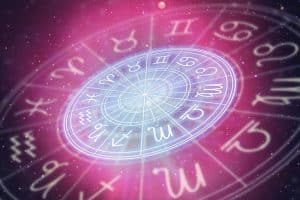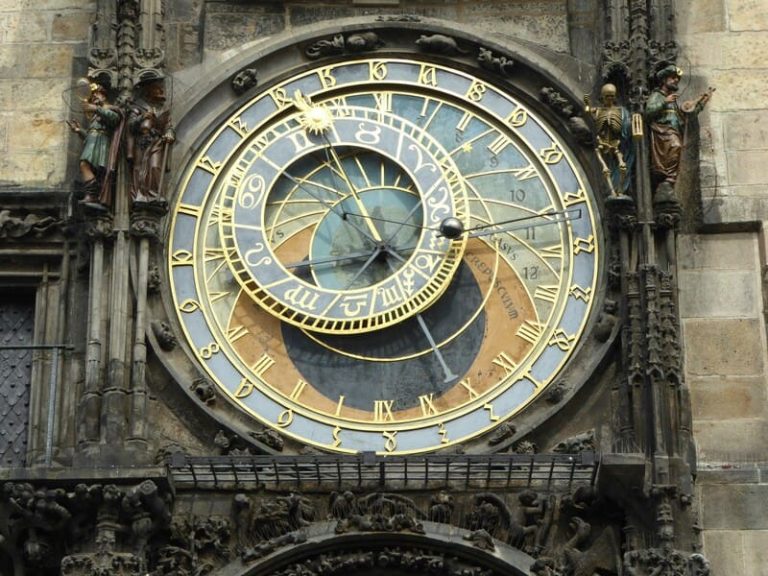Getting into astrology can be overwhelming. What does it mean when Mercury is in conjunction with your Sun sign? What is the difference between being an air or a fire sign? What in the world does it mean to have Venus in your third house? These questions, and many more, can deter you from astrology because they sound complicated and can be. But that’s why we’ve put this together. We want to simplify the complicated and allow you to open yourself up to the wonderful world of astrology and all the things the universe has in store for you.
As you work through this article, you’ll notice details such as each planet’s role and what it means to have a planet in your 1st-12th house. These are two important details to help you understand astrology, as they detail what your sun, moon, and rising (ascendant) sign can teach you about yourself. Therefore, there will be an article on those pieces of astrology that digs deep into these important details.
Let’s dive right in!
First, what is Astrology?

Astrology studies the movements and relative positions of celestial bodies interpreted as having an influence on human affairs and the natural world. For example, those with their Sun sign in Sagittarius are commonly known for their adventurous, curious, and independent nature.
Aspects: When the planets move in their elongated orbits around the Sun, they form various angular relationships with one another using the Sun or Earth as the center.
- Conjunction: 0 degrees. The position of a planet or the Moon when it’s in line with the Sun when seen from Earth. These are also known as “hard aspects” because they represent challenges and obstacles. For example, the Moon is in conjunction with Jupiter.
- Opposition: 180 degrees. The position of an outer planet or the Moon when it is in line or nearly in line with the Earth as seen from the Sun and is approximately at its nearest to the Earth.
- Sextile: A harmonious aspect that is formed when two planets are 60 degrees apart from each other. A soft aspect is commonly referenced as an easy aspect as it brings clarity to your life.
- Square: An aspect of about 90 degrees between two planets.
- Trine: An aspect of 120 degrees between two planets
- Grand Trine: Pattern involving three points. A triangle is the result when lines are drawn from each plant to the other in a natal chart.
Cardinal signs: Related to the change of the seasons. Critical degrees of 0, 13, and 26.
- Aries
- Cancer
- Libra
- Capricorn
Cusp: Division between houses/signs. When one sign ends and the other begins.
Descendant: The sign and degree opposite the ascending/rising sign (more on that later on) on the astrological chart. This represents the qualities and partnerships that complement your personality and life path.
Elements: Four substances thought in ancient and medieval cosmology to constitute the universe.
- Air: Gemini, Libra, and Aquarius
- Earth: Taurus, Virgo, and Capricorn
- Fire: Aries, Leo, and Sagittarius
- Water: Pisces, Scorpio, and Cancer
Feminine Signs: Taurus, Cancer, Virgo, Scorpio, Capricorn, and Pisces. Commonly referred to as negative or receptive signs.
Fixed Signs: Stability with Taurus, Leo, Aquarius, and Scorpio signs. Critical degrees of 8,9, 21, and 22.
Horoscope: A prediction of one’s future by comparing the zodiac data from the time of birth. For example, it can depict the positions of celestial bodies such as the Sun, Moon, and planets, along with other astrological aspects at a specific time, which can be used to analyze characters and predict events.
Houses: Any of the 12 divisions of the zodiac listed below.
- 1st house
- 2nd house
- 3rd house
- 4th house
- 5th house
- 6th house
- 7th house
- 8th house
- 9th house
- 10th house
- 11th house
- 12th house

Masculine Signs: Aries, Gemini, Leo, Libra, Sagittarius, and Aquarius. These are referred to as positive signs.
Midheaven: the point on the eclipse, measured in degrees, that crosses the meridian of a particular place at a particular time. Commonly seen when looking at one’s birth chart and their time of birth.
Mutable Signs: Adaptability with Gemini, Virgo, Sagittarius, and Pisces. Critical degrees of 4 and 17.
Natal Chart: This is the horoscope drawn for a person’s birth. In more common terms, it’s your birth chart. It is a map of your life that is put together using “pictures” of the planets at the time of your birth, which results in a variety of personality traits.
Planets/Planet Rulers: Each sign is ruled by a planet. For instance, Sagittarius is ruled by Jupiter.
- Mercury
- Venus
- Earth
- Mars
- Jupiter
- Saturn
- Uranus
- Neptune
- Pluto
Personal Planets: Sun and Moon (luminaries), Mercury, Venus, and Mars (inner planets). These have a specific and personal effect on your personality.
The Big Three: The big three, your Sun, Moon, and Rising sign, are intregal parts of astrology and helping you to understand who you are based on the the time, place, month, year, and day you were born. However, to make it digestible, these are the basic definitions, which can provide a pretty clear understanding.
- Sun Sign: Your identity and where you shine.
- Moon Sign: Focuses on your body and your emotions.
- Rising (Ascendant): Your rising sign explains your motivations in life.
Transit: The current position of a planet forms an aspect of the position of a planet in your birth chart.
Quadrants: There are four in your chart, each starting at the “cusp” of the first, fourth, seventh, and tenth houses.
Retrograde: When a planet moves backward. You’ve probably heard that “Mercury is in retrograde” before. The direction the planets are going (retrograde or direct) is based on their movement about the Earth.
Zodiac: A circle of 360 degrees divided into 12 equal sectors of 30 degrees each that are astrology signs.
Conclusion
Understanding astrology doesn’t have to be such an overwhelming experience. By breaking down the fundamental terms and concepts, you will be able to appreciate the multiple ways that astrology can influence our lives and personalities. Astrology is a tool to help you understand yourself. The more you learn, the more you’ll feel like you can embrace the connections between what the universe has in store for you and who you already know that you are.
Remember to be on the lookout for the next article that will do a deep dive into the big three signs, power of the planets, and what it means to have certain planets, in certain houses, depending on your birth chart!










